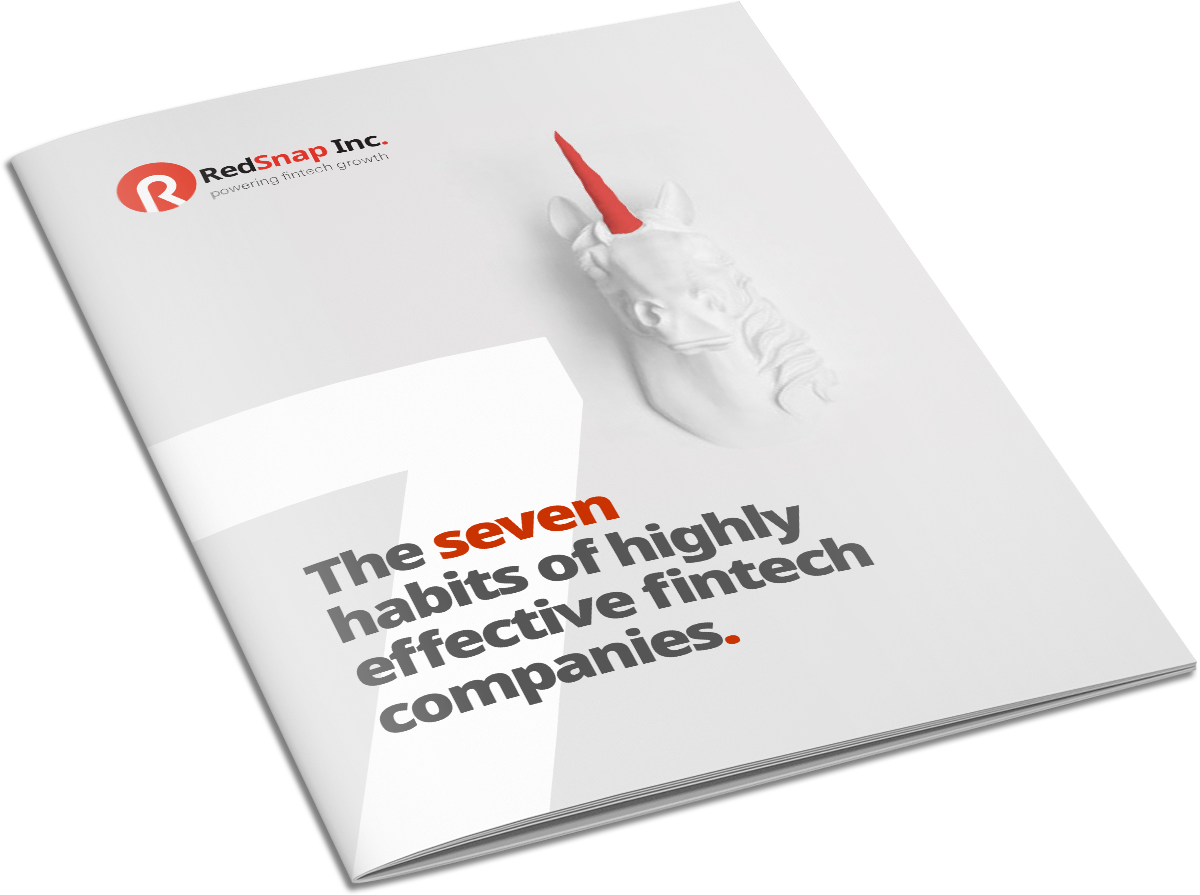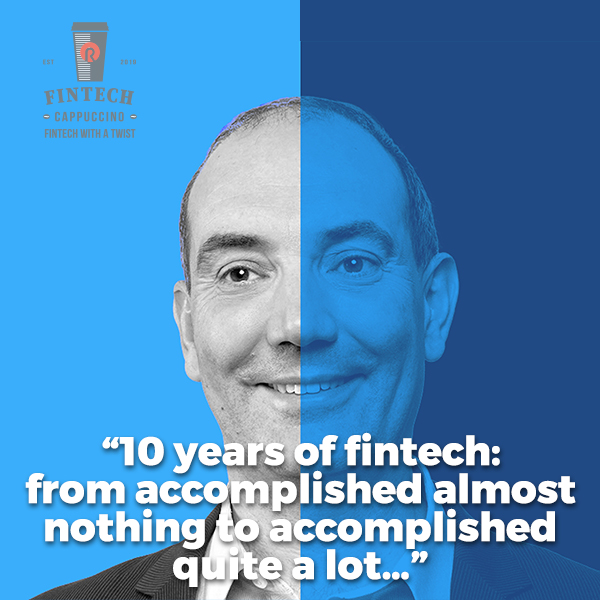The foundation of any successful go to market strategy ...
Marketing
Sales
Automation
For business leaders
For sales leaders
For marketing leaders
RedSnap Inc.
RedSnap Inc. is an agency for fintech branding, marketing & sales. We power fintech growth by aligning your marketing & sales. We develop appealing brands, impactful marketing campaigns and successful sales strategies that truly drive growth. Let’s simply say: we make sure your (potential) clients see you, like you and buy you.
For fintechs
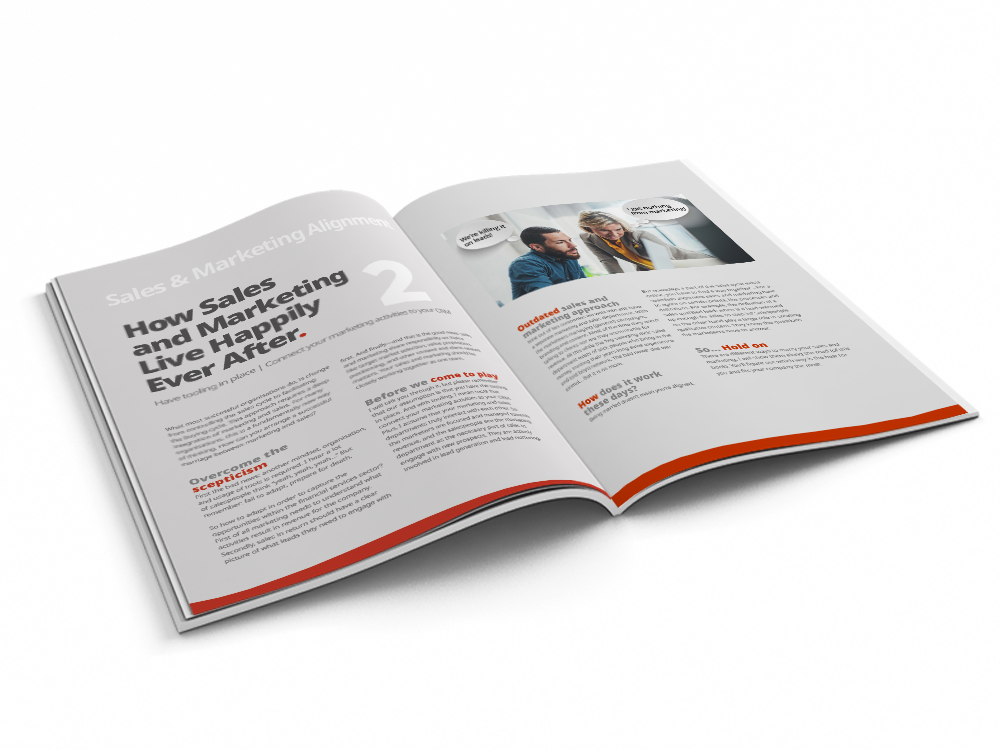
Download here.
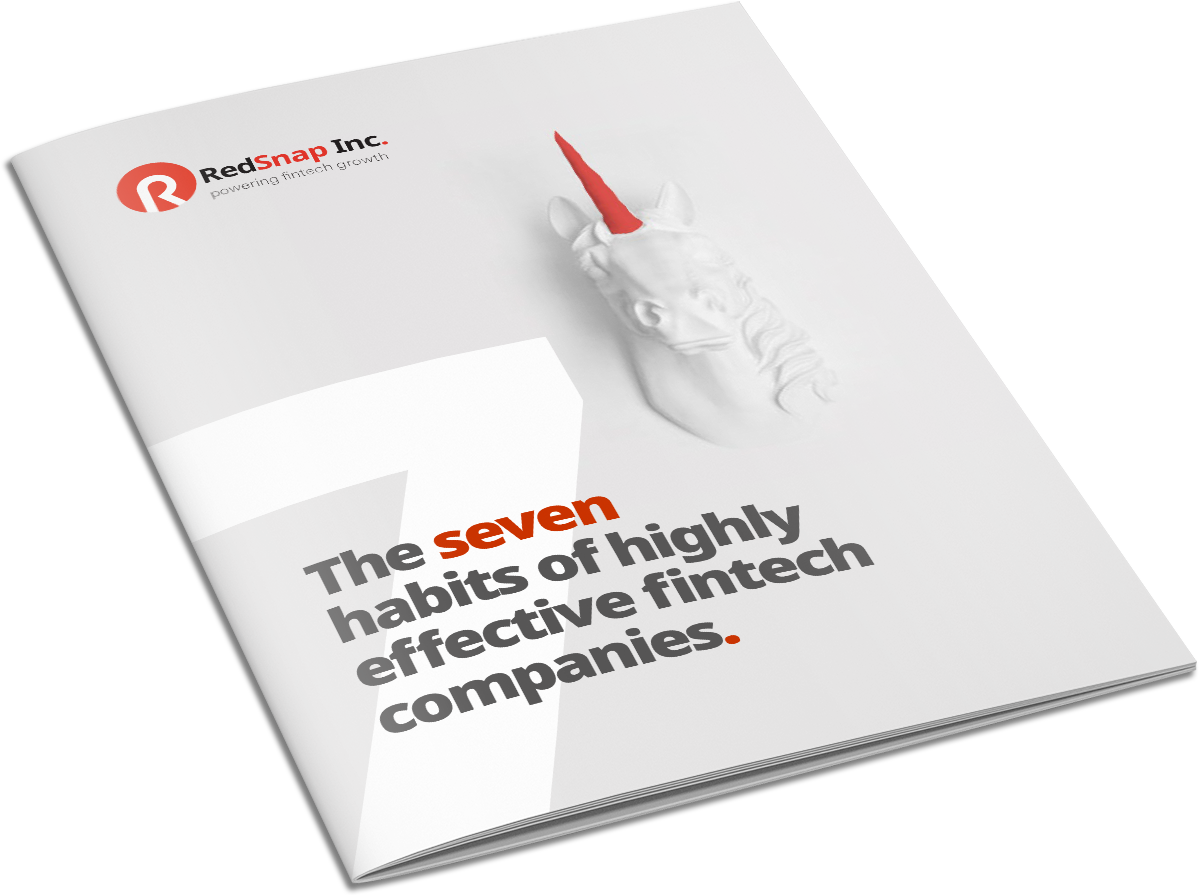
eBook 7 habits of highly effective fintech companies
Fintech
Mind the Gap!
Stop selling. Start giving : Sales & Engagement Approach.

Just selling for the sake of it has and will never work. You need to understand how and when businesses, especially banks, are ready to spend.
It might come as a surprise to you, but focusing on selling is sometimes the worst thing a sales organisation can do. A much better approach is to focus on the problem you solve for your customers and how can you help them navigate the deal through their own organisation.
>>But really, stop selling and start focusing on your customer- their problems and how they buy…<<
People in general, and business customers specifically, do like to purchase but don't want to be sold to. All you need to do is find the clients who wish to buy from you because you GIVE them something that solves a real problem for them. You help them.
Navel-gazing.
Many sales organisations think from their own perspective. They make exciting plans with all the necessary steps that their salespeople need to take. But they tend to forget to research HOW a customer buys. It might sound logical to figure this out first, but 9 out of 10 companies make a sales pipeline (what steps do they need to take) but completely forget where the client is in their buying journey.
As a matter of fact, really analysing your client's journey and the way they buy is pretty hard. They don’t even know what the buying process is for themselves! They need the sales people to navigate through their own organisation.
The more deeply invested you are with the details of your own product or service, the more difficult it is to step back and see the picture your potential customers need to see. You simply know too much about your own products and services to have a neutral vision. So you might consider working with a partner like RedSnap for that. Anyway, enough of this subtle self-promotion, let's have a look at what you need for a more effective sales and engagement approach.
From lead to close.
The sales and engagement process covers all the steps from lead to close. This is different for every company, for it depends mainly on the complexity of the products and services they are selling. Also realize that only 5% are ‘in the market’ for your product. The rest you have to make aware of the problem you are solving.
For sales managers they need to implement and manage the process. PLEASE NOTE: do not bother the sales reps with this. Many organisations made the disastrous turn to bother the reps with DATA. Sales need to be focussed 100% of their time on revenue and deals.
The main ingredients for the sales managers are:
- The sales pipeline from the awareness to the consideration phase ending with a buying decision
- Enablement of sales with tools, getting processes in order, making a competition analysis, training and deal coaching.
- The way you organise your sales is by setting targets, reporting, meeting structures and aligning these with the teams that are surrounding your sales organisation.
After implementing the sales process, the engagement process ( the structural approach that determines whether you engage with a client or not) is one of the most critical processes for sales organisations. Your company's growth is determined by selecting the right opportunity, understanding your WIN chances, and spending valuable time and resources.
This is where the gap is, and you can close it.
Often sales organisations underestimate how much they need proper lead qualifications. The lead qualification process is a good example of how different marketing and sales can be. It shows that the lack of mutual understanding between marketing and sales teams causes a chasm.
To close this gap, just start the conversation and discuss what a marketing qualified lead (MQL) is and what a sales qualified lead (SQL). And keep on discussing this, for each lead is unique. It is essential to follow up on leads and ensure that you use the right tooling to follow your leads. CRM tools like HubSpot can help your marketing and sales teams actually work together.
But where is your client at?
To really engage with your customers, you have to know where they are and where they are heading. You can figure out where your customer is in the buying journey in a couple of steps.
Step 1: Identify
- Define your ideal customer profile
- Identify leads in those profiles that already started the research process (this is the 5% that are in the market)
- 95% you need to make the industry segment aware of the problem you solve.
Step 2: Connect
- Trigger events and help your clients
- Use common connections
Step 3: Always add value
- Use helpful technologies in HubSpot (templates, CRM, meetings scheduling tool etc.)
Step 4: Explore
- Check the fit with your offering and see if you have a qualified opportunity
- Use a qualification framework to define challenges, goals, plans, timelines, consequences, implications, budget and who has or is the authority.
Step 5: Offer advice
- What is the benefit for your customer? It is not about your product or service; show them how they can best achieve their goals and what you can do to help them.
Don't be a loner.
As for all the articles in this 'Mind the Gap' series, we would like you to fully understand how important it is to connect marketing and sales for your sales engagement. So don't be a loner, and make sure to get out there and let your marketers provide you with the information you need for your sales engagement.
This is the way to attract your prospects, convert them into leads, close them to customers and turn them into evangelists.
In our next blog we will talk about pipeline optimization.
The Series
Mind the Gap.
-
From lead to deal1: The sales game has changedFacilitate the buyer's journey, change your mindset
Lack of structure and a lot of creativity. Are these the characteristics that come to mind when asked to describe a great salesperson? Not really right? Yet, the best sales people I know in the industry are not very structured, not very organised nor disciplined.
-
Sales & Marketing alignment2: How Sales and Marketing live happily ever afterHave tooling in place | Connect your marketing activities to your CRM.
In our article 'From lead to deal: The sales game has changed' we observed that successful organizations changed from controlling the sales cycle to facilitating the buying cycle. This approach requires a deep integration of marketing and sales. For many organizations this is a fundamentally new way of thinking. How can you arrange a successful marriage between marketing and sales?
-
Branding & identity3: Who do you think you are?How to get your branding in place.
Welcome to our ‘mind the gap’ article about brand & identity. Let’s first make sure we are all on the same page about the terminology because the language used is often misunderstood. Brand: Your brand is a combination of a visual identity, tone of voice and behaviour - most visibly expressed through your logo, taglines and images used in communication campaigns.
-
Positioning4: Finding the right positionPositioning is all about differentiation.
Welcome to our ‘mind the gap’ article about positioning. Here we will discuss the importance of positioning and how it can help you stand out from your competitors. How many times have you walked into a bank to pitch for a piece of business only to be told ‘we already have the functionality you offer’ or ‘we solved that problem a long time ago’.
-
Value proposition5: Value proposition: the extra mileWhat problem do we solve and for whom?
In this ‘mind the gap’ article we will discuss the value proposition and how it will help your fintech sales efforts in the financial services sector. That is, if applied correctly... Going the extra mile...
-
Target markets6: Finding your target audienceHow do you enter the considerable and risk-averse market of banks?
Most Fintechs face the same challenges in finding their target audience. They have a fantastic product which solves a problem for a bank. But how do they enter the considerable and risk-averse market of banks? A challenge like this isn’t a day at the beach, or is it?
-
Buying committee7: Not a shopaholicGet to know the buying committee
Before banks buy your product (or service), you first need to convince the buying committee. The people on this committee make sure that the banks money is well spent. Here is how you deal with them in order to close a deal.
-
Competition analysis8: The illusion of the special snowflakeNever underestimate your competition
A lot of fintechs might feel the urge to skip the competition analysis. Simply because they feel they don’t have any competitors. Their product is a unique solution, so why bother with looking at what others do? Well, fintechs should worry because there is always some competition; ‘special snowflake-ness’ is an illusion.
-
Pipeline Optimization10: Hot or not?Optimize your sales pipeline and find the most effective way from lead to deal.
Phrases like 'pipeline optimization' that we use in our Sales & Marketing businesses do not always sound exciting. Nevertheless, the topic of pipeline optimization is hot as can be! If you optimize your sales pipeline, you'll find the most effective way from lead to deal. Sounds like a plan, but how do you do it?
-
Sales Enablement11: Help your sales star winSales enablement is everything you need to do to enable your sales people to sell more
Let's have a look at 'Sales Enablement’. There seem to be many misunderstandings about this topic, but most companies don't even notice it.
-
Winning Sales12: Winning Sales is not everything: it is the only thingIt is not that companies forget about sales, but rather that they don't know how to play the sales game.
Sales is like playing tennis. Nobody cares about how many balls you hit, or services you make, how hard you hit the ball or how many miles you ran on the court. At Wimbledon, it is all about the performance: winning the game. And that's the same with winning sales.
The Ultimate Guide to Winning Sales in Fintech.
In this e-book, you'll learn about the one important question you need to focus on: how to win the market, as a team. Get your own copy and conquer the fintech world!
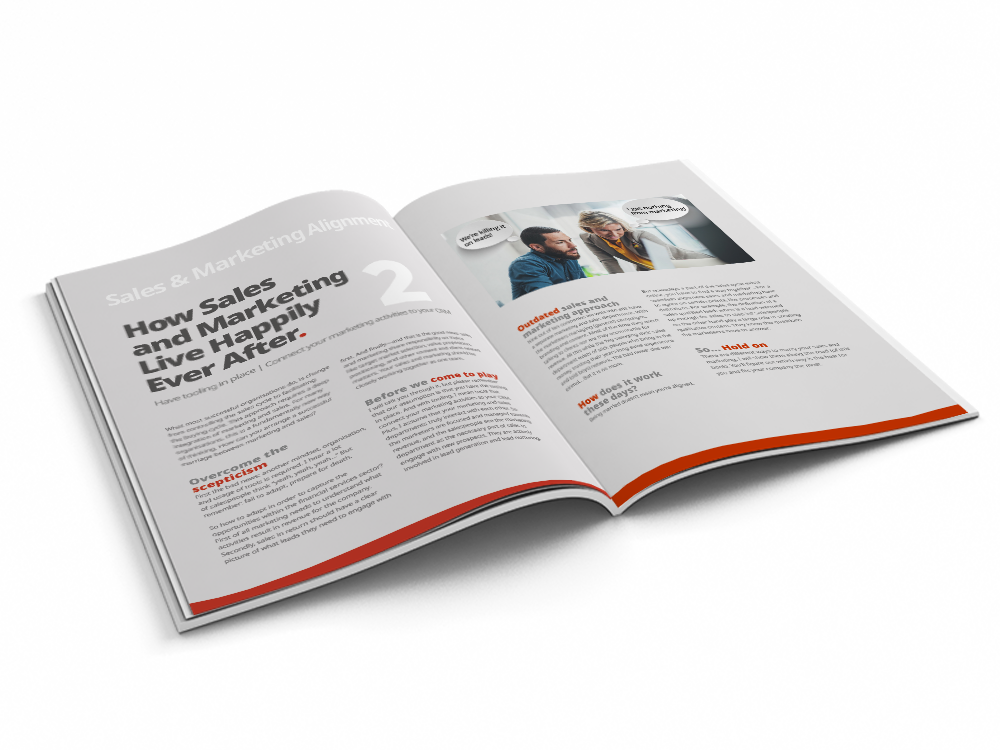
The 7 habits of highly effective fintechs
What are the 7 key habits that are continuously practised by successful fintechs? Follow the habits outlined in this e-book and you will be well on the way to growth.
